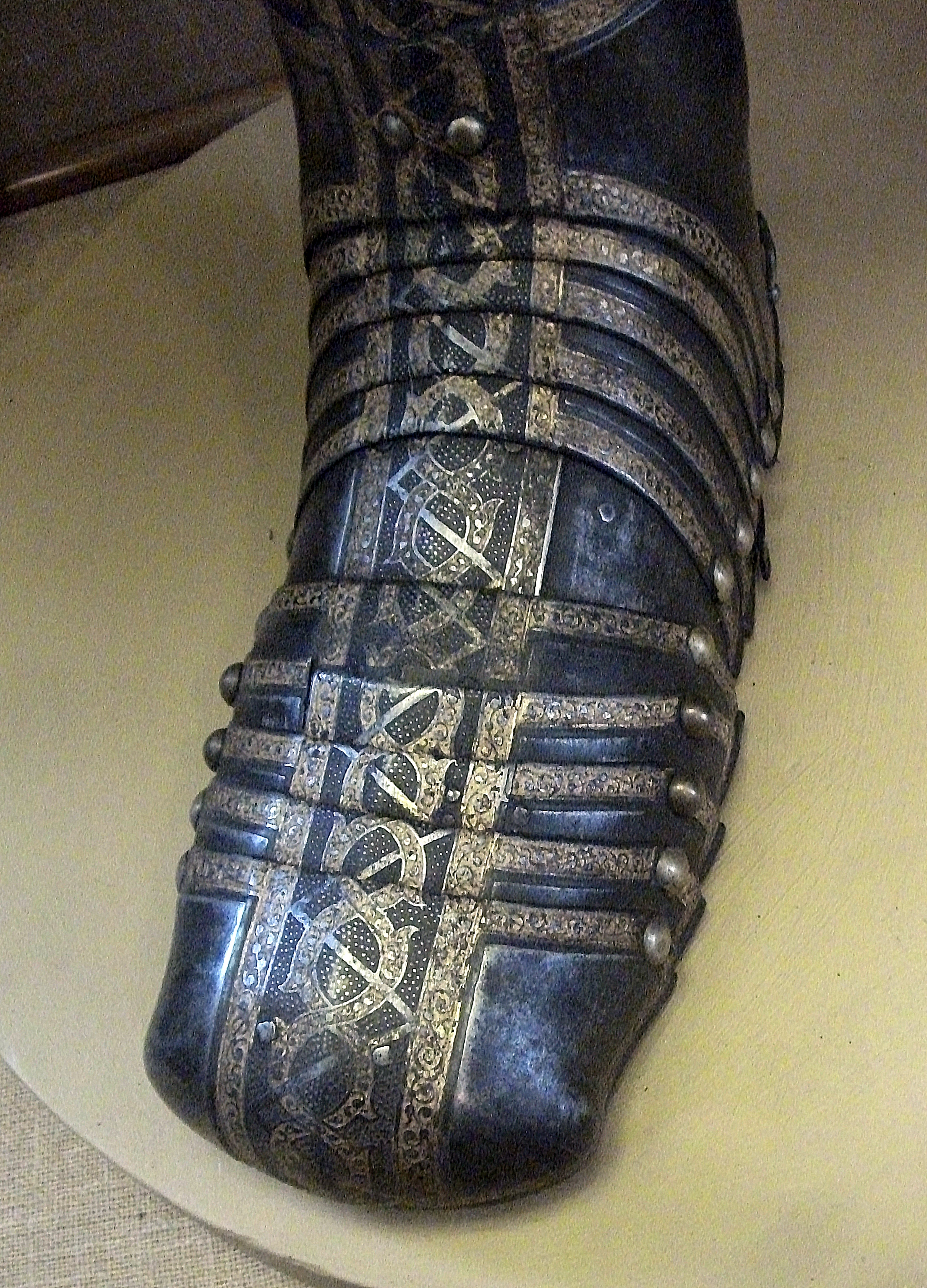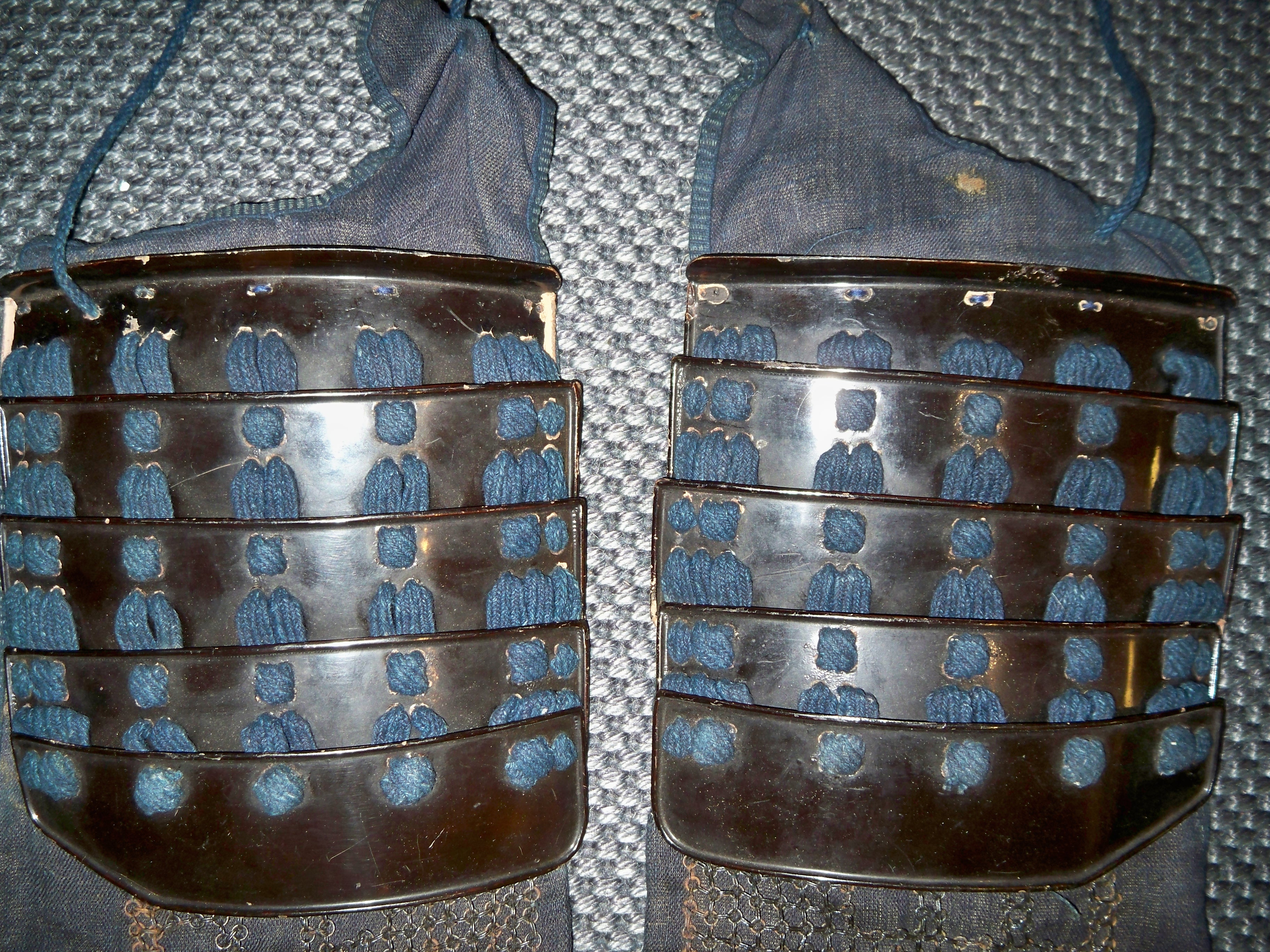Lame (armor) on:
[Wikipedia]
[Google]
[Amazon]

 A lame is a solid piece of
A lame is a solid piece of
sheet metal
Sheet metal is metal formed into thin, flat pieces, usually by an industrial process.
Thicknesses can vary significantly; extremely thin sheets are considered foil (metal), foil or Metal leaf, leaf, and pieces thicker than 6 mm (0.25 ...
used as a component of a larger section of plate armor
Plate armour is a historical type of personal body armour made from bronze, iron, or steel plates, culminating in the iconic suit of armour entirely encasing the wearer. Full plate steel armour developed in Europe during the Late Middle Ages, e ...
used in Europe during the medieval period. It is used in armors to provide articulations or the joining of the armor elements. The size is usually small with a narrow and rectangular shape. Multiple lames are rivet
A rivet is a permanent mechanical fastener. Before being installed, a rivet consists of a smooth cylinder (geometry), cylindrical shaft with a head on one end. The end opposite the head is called the ''tail''. On installation, the deformed e ...
ed together or connected by leather
Leather is a strong, flexible and durable material obtained from the tanning (leather), tanning, or chemical treatment, of animal skins and hides to prevent decay. The most common leathers come from cattle, sheep, goats, equine animals, buffal ...
straps or cloth lacing to form an articulated piece of armor that provides flexible protection. The armor worn by the samurai
The samurai () were members of the warrior class in Japan. They were originally provincial warriors who came from wealthy landowning families who could afford to train their men to be mounted archers. In the 8th century AD, the imperial court d ...
class of feudal Japan
Japan is an island country in East Asia. Located in the Pacific Ocean off the northeast coast of the Asia, Asian mainland, it is bordered on the west by the Sea of Japan and extends from the Sea of Okhotsk in the north to the East China Sea ...
used ''lames'' in the construction of many of their individual armor parts. The Japanese term is , which can both refer to the lame or its borderings.
Examples
The Dos Aguas armor produced inValencia, Spain
Valencia ( , ), formally València (), is the capital of the Province of Valencia, province and Autonomous communities of Spain, autonomous community of Valencian Community, the same name in Spain. It is located on the banks of the Turia (r ...
, is an example of a plate armor made of lames. The tassets are composed of three lames, with the inner edge of each turned out at right angles. The design provided the armor strength due to the continuous arch-shaped flange. The Schott-Sonnenberg style produced in Nuremberg
Nuremberg (, ; ; in the local East Franconian dialect: ''Nämberch'' ) is the Franconia#Towns and cities, largest city in Franconia, the List of cities in Bavaria by population, second-largest city in the States of Germany, German state of Bav ...
also featured a three-lame skirt. The tassets are also composed of lames riveted to the lower lame of the fauld.
See also
* Lamellar armour * Laminar armour *Scale armour
Scale armour is an early form of armour consisting of many individual small armour scales (plates) of various shapes attached to each other and to a backing of cloth or leather in overlapping rows.
References
External links
*Plate armour
Plate armour is a historical type of personal body armour made from bronze, iron, or steel plates, culminating in the iconic suit of armour entirely encasing the wearer. Full plate steel armour developed in Europe during the Late Middle Ages, es ...
Western plate armour
Samurai armour
{{medieval-armour-stub